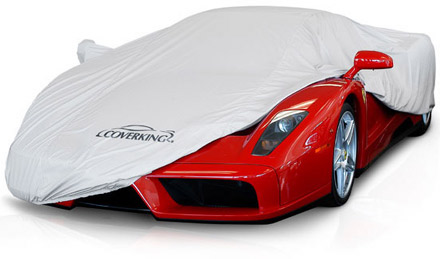
Car covers can protect your car parked in the great outdoors from the damaging effects of ultraviolet radiation, acid rain, bird droppings, wind borne particles, sun fading, the claws of animals and even the prying eyes of thieves while providing a clean, custom fit. On the other hand, car covers inside garage can provide a barrier against airborne dirt and foot borne varmints.
Nevertheless, the use of car cover is a double-edged sword as they are both protective and possibly damaging. A cover that does not fit properly may be more damaging than no cover at all. If it is too loose, wind may cause it to flap against the paint, causing severe scratching. To obtain the best fit, order a cover that is custom fitted for your year and make of car.
The one-size-fits-all are cheaper, but will not provide the tight fit needed. If the car is not clean, the dirt trapped between the paint and the cover can also cause scratches as the cover is installed or removed or is moved around by the wind. The key to avoiding these problems is to put a proper fitting cover on a clean car. The best types have a bottom locking system that allows a plastic coated cable to hold the bottom of the cover snugly. This will help prevent wind movement of the cover and thieves from taking a peek.
The materials for your car covers are also important. There are few criteria used for car cover materials that you can refer:
1. Water Resistance is a relative grade of how much water will penetrate the fabric. Waterproof materials will not breathe, trapping moisture.
2. Breathability describes how much moisture vapor trapped under the vehicle can escape through the cover. If a material is not breathable, it will trap moisture and cause rust.
3. Compactness measures how easily the material is to pack, and how small the final packed cover is. This is an important attribute if you will use your cover often.
4. The Sun’s UV Rays damage a vehicle’s interior, finish, and also the car cover material. Materials with good UV Rays proof are most likely not to degrade under extreme sun conditions.
5. Natural and Man-Made Hazards, such as bird droppings, tree droppings and industrial fall out are very acidic, and can eat through a car’s finish. Good material will resist to these dangerous chemicals.
Besides materials, you also need to know how to install or remover a car cover. To do that, first, place it on the car in position, but not hooked under the car. Take the driver’s side one third of the cover and fold it over the top of the car towards the passenger side, so the fold runs along the edge of the top, hood and trunk. You will find that the roof is usually one third of the cover and the sides are each a one third. Fold the passenger side third of the cover over the driver’s side section, so you now have three layers of cover over the roof, hood and trunk. Start rolling at either the trunk or hood end and roll the cover up without moving the cover. This way, you have minimized the movement or scratching of the car cover as you remove it. To install, just reverse the process and unroll along the car and fold down the side.
Car cover needs to clean periodically. Read the instruction properly. Most of the car covers can be washed in a machine with a mild detergent and no softener. Dry thoroughly according to the directions. No car cover should be stored wet. If it is wet, dry it as soon as possible.
2 responses to “Tips to Take Care Your Cars: Car Covers”
Вообще, честно говоря, комментарии тут гораздо любопытней самих постов. (Не в обиду автору, конечно :))
Интересно. Думаю многие будут не согласны..